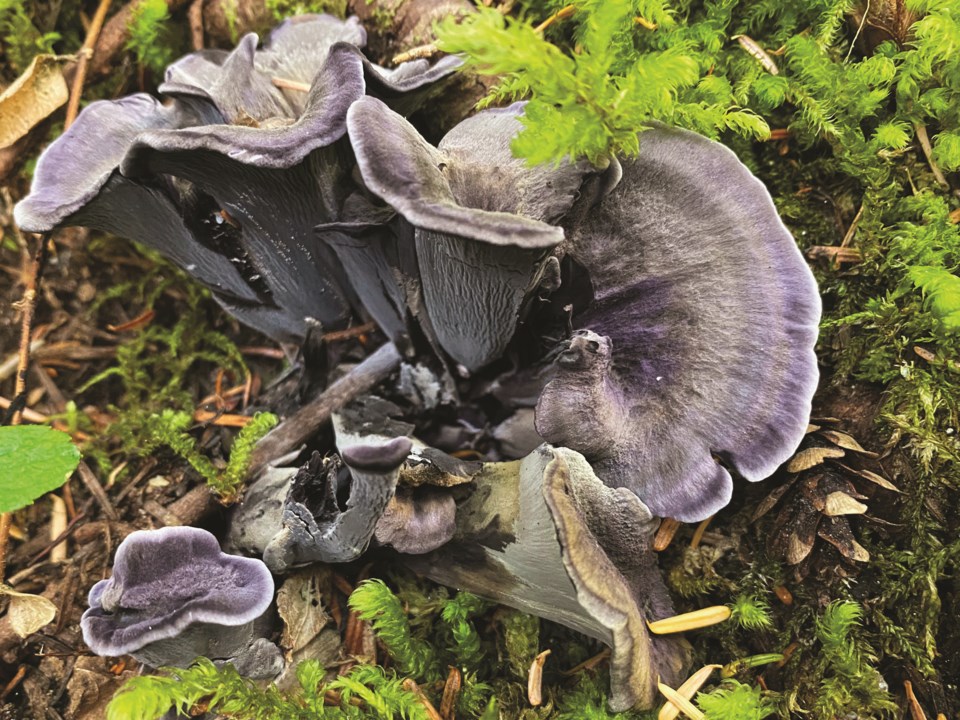While hunting for edible wild mushrooms like morels (Morchella), chanterelles (Cantharellus), and pines (Tricholoma magnivelare), I often start by searching high above the ground. Although I know I won’t find the much sought-after fruiting bodies there, I do know that if I find certain species of trees, then I might also find the fungi that I’m looking for.
That’s because these choice edibles, and many other types of fungi in our forest, have a symbiotic, or mutually beneficial, relationship with trees, especially those in the pine family (Pinaceae). They’re called mycorrhizal (from the Greek mykes: fungus and rhiza: root) and nearly 90 per cent of vascular land plants could not survive without them.
Mushrooms are only the fruiting body of a fungus, just like an apple is the fruiting body of an apple tree. The rest of the fungus lives hidden below the forest floor and is made up of white hair-like strands called hyphae that are known collectively as the mycelium.
Mycorrhizal fungi colonize the root system of a host plant and connect to other vascular plant roots around it. Fungi can’t produce their own food but by tapping into the roots of plants they can exchange access to nutrients and water for carbon-based sugar. Meanwhile, the vascular plants can utilize this fungal network, aptly nicknamed the “Wood-Wide Web” in order to communicate with each other and share resources.
UBC forest ecologist Suzanne Simard is one of the scientists studying this fascinating underground network. With help from one of her doctoral students Kevin J. Beiler, she was able to map the forest network underground and discovered that the oldest trees had developed the biggest networks that connected them with the trees around them.
Simard and her team also discovered that the trees use mycorrhizae to transfer carbon between one another, demonstrating how these fascinating fungi can also store large amounts of carbon and help mitigate climate change. That’s why it’s important to be mindful when picking mushrooms and always cover your holes so that you don’t damage the mycelium and keep this vital network intact.
Old forests are not only a great place to forage for wild mushrooms, they also provide essential wildlife habitat, clean water, and insulation against climate change. Unfortunately, time is running out for our ancient giants. In B.C. approximately five per cent of the province’s total forested area, about 32,000 square kilometres, is made up of old-growth forest. About half of that is protected in parks and wilderness areas, but the remaining half will be logged unless current policies change.
If you would like to take a stand for the last remaining old-growth forests in B.C. then join the Forest March BC grassroots movement. Find out how you can get involved by joining the “Forest March BC - Whistler” event on Facebook or clicking here.
Naturespeak is prepared by the Whistler Naturalists. To learn more about Whistler's natural world, visit their website.




